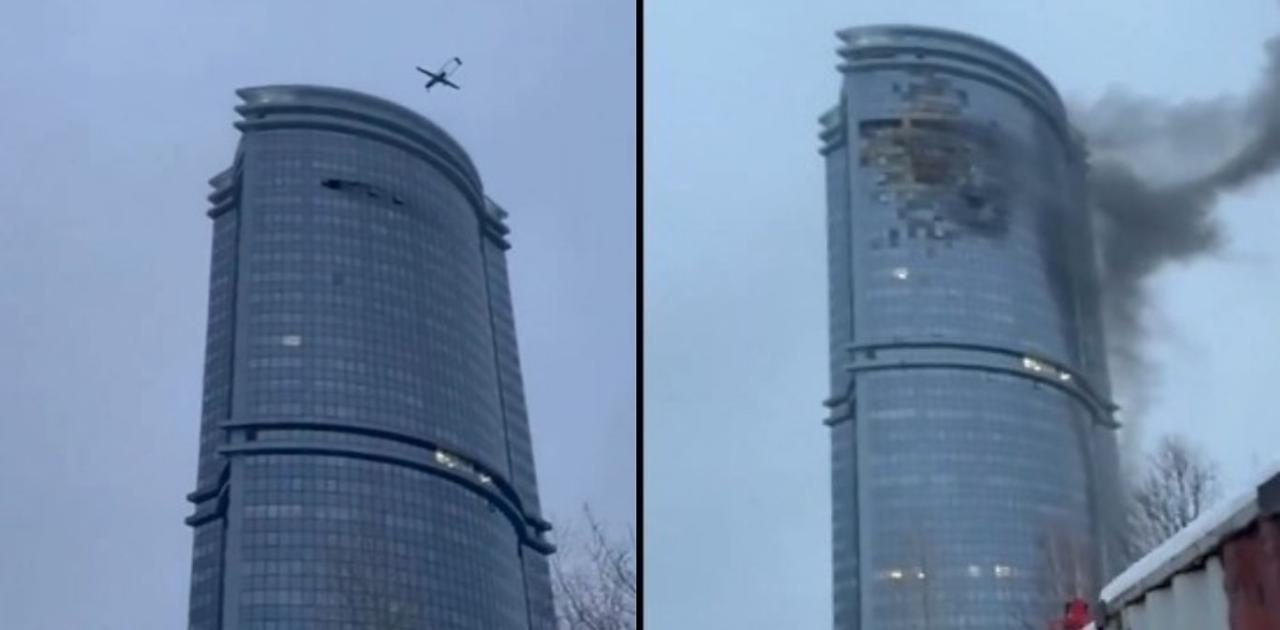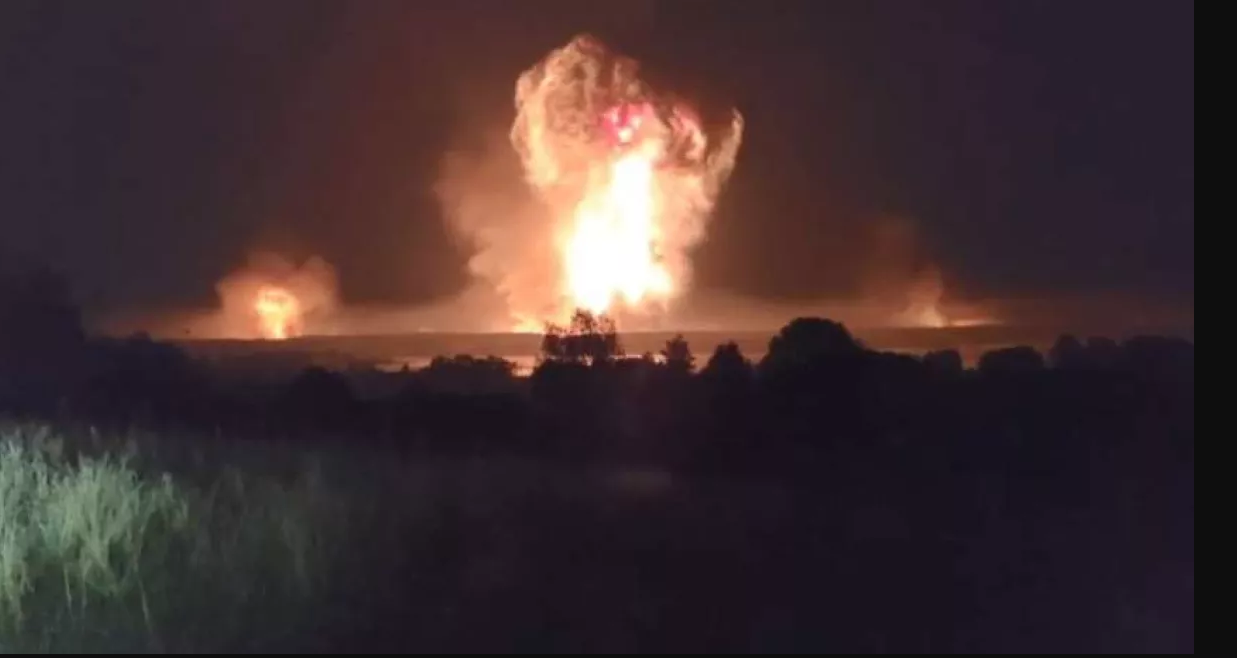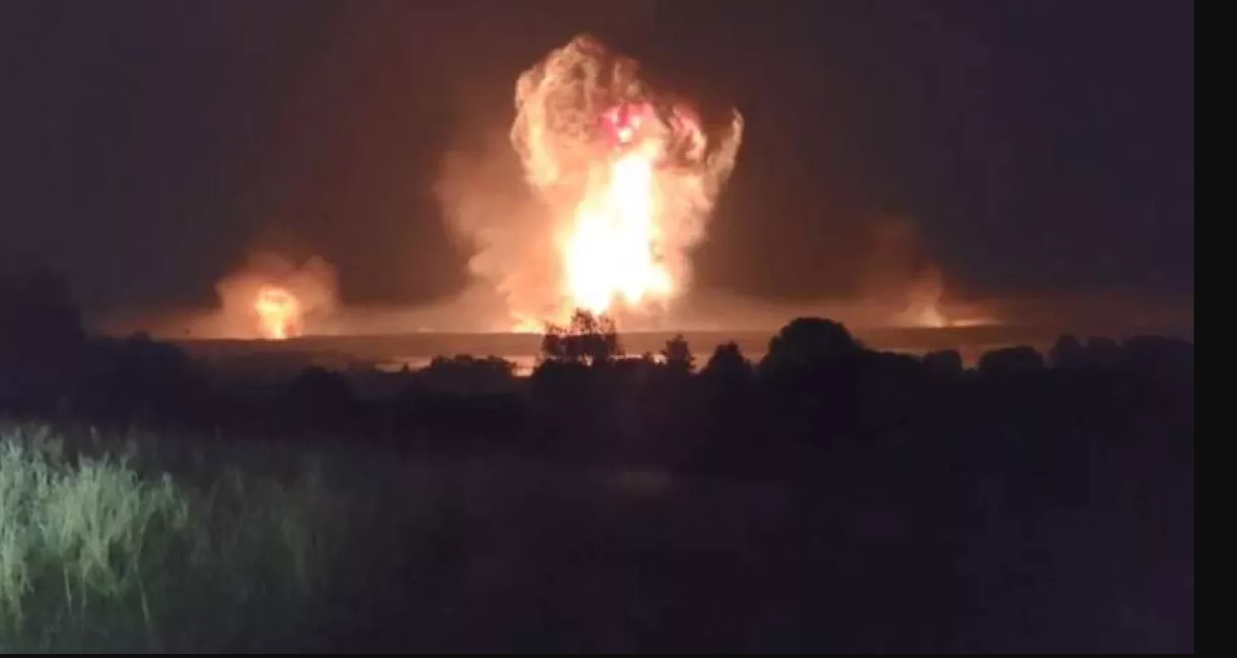Kazan drone attack: The recent alleged drone incident in Kazan has sent shockwaves through the region, raising critical questions about security vulnerabilities, geopolitical implications, and the evolving nature of modern warfare. This analysis delves into the circumstances surrounding the attack, examining the technological aspects, response measures, and the broader public and political ramifications. We will explore the potential motivations behind the incident, the technological capabilities displayed, and the lessons learned for future security protocols.
The event unfolded rapidly, beginning with initial reports of explosions and quickly escalating into a full-scale investigation. The damage assessment is still ongoing, but early reports suggest significant material damage and, unfortunately, potential casualties. Authorities have launched a comprehensive inquiry, aiming to identify those responsible and prevent similar incidents. This incident serves as a stark reminder of the evolving threats posed by drone technology and the urgent need for enhanced security measures.
The Kazan Drone Attack: An Analysis
The alleged drone attack on Kazan, while still under investigation, has raised significant concerns regarding regional security, technological advancements in drone warfare, and the evolving nature of asymmetric conflict. This analysis delves into the event’s various aspects, exploring the technological capabilities employed, the response measures undertaken, the geopolitical implications, and the public perception surrounding this incident.
Event Overview: The Kazan Drone Attack
Reports suggest a series of drone attacks targeted specific locations within Kazan. While the exact number of drones and targets remain unconfirmed pending official investigations, initial reports indicated damage to infrastructure and potential casualties. The timeline of events, from the first reports of unusual aerial activity to the official statements acknowledging the incident and subsequent investigations, remains fragmented.
However, it is clear that the incident unfolded rapidly, causing immediate disruption and prompting a swift security response.
| Alleged Perpetrators | Victims | First Responders | Investigative Authorities |
|---|---|---|---|
| This remains under investigation; no group has claimed responsibility. Speculation includes various possibilities, ranging from internal dissent to external actors. | Civilians and potentially first responders depending on the extent of the damage and casualties. Precise numbers are unavailable until official reports are released. | Local emergency services, including police, fire, and medical personnel, likely responded to the scene. Details of their response are still emerging. | Russian federal and regional authorities are likely conducting the main investigation, possibly with assistance from specialized agencies. |
Technological Aspects of the Attack

The drones involved likely possessed advanced capabilities. Navigation was likely achieved through a combination of GPS, inertial navigation systems, and potentially image recognition software for autonomous target acquisition. Payloads could have ranged from explosives to incendiary devices, depending on the intended destructive capacity. Compared to previous drone incidents, this attack, if confirmed, demonstrates a potential increase in sophistication, suggesting a higher level of planning and technological proficiency.
Security and Response Measures

The incident highlights vulnerabilities in Kazan’s air defense systems. The response included immediate lockdowns in affected areas, emergency services deployment, and the launch of an investigation to identify the perpetrators and determine the methods employed. The investigation is likely focusing on recovering drone wreckage, analyzing flight paths, and examining potential electronic signatures. A hypothetical security protocol would involve enhanced air surveillance systems, drone detection technologies, and potentially counter-drone measures such as jamming or interception capabilities.
The recent drone attacks on Kazan highlight the increasing vulnerability of civilian infrastructure to aerial threats. Understanding the capabilities of such drones is crucial, and advancements in drone technology are constantly evolving, much like the sophisticated monitoring systems, such as the cobequid pass camera , which showcase the potential for early detection and surveillance. Ultimately, the Kazan incident underscores the need for robust counter-drone measures to safeguard against future attacks.
Geopolitical Implications
The potential impact on regional stability is significant. The incident could escalate tensions, particularly if responsibility is attributed to a foreign entity. Motivations could range from expressing political dissent, destabilizing the region, or demonstrating technological capabilities. Comparison with similar incidents in other geopolitical contexts, such as the use of drones in conflicts in other parts of the world, could reveal potential patterns or similarities in tactics and objectives.
- Increased regional tensions and potential for retaliatory actions.
- Heightened security measures and increased military spending.
- Potential for further drone attacks or escalation of conflict.
- Shifting geopolitical alliances and power dynamics.
Public Perception and Media Coverage, Kazan drone attack
Public reaction in Kazan and beyond has been a mix of shock, fear, and anger. Media coverage has varied, with some outlets emphasizing the technological aspects of the attack while others focus on the human cost and political implications. Different perspectives exist, with some emphasizing the need for increased security, while others question the official narratives and demand greater transparency in the investigation.
Social media has played a significant role in disseminating information, shaping public opinion, and fueling speculation, sometimes leading to the spread of misinformation.
Illustrative Examples

A potential drone used might have been a relatively large, fixed-wing UAV with a long endurance, capable of carrying a substantial payload. It could have incorporated advanced features like GPS-guided navigation, obstacle avoidance systems, and a sophisticated autopilot. The control system might have involved a ground control station with a high-bandwidth communication link, allowing for real-time monitoring and control of multiple drones.
Immediately following the attack, the scene would likely have been chaotic. Damaged buildings might have been smoldering, emergency vehicles would have been rushing to the scene, and injured individuals would be receiving medical attention. The air would likely have been filled with smoke and the sounds of sirens. The human impact would have been devastating, affecting families, communities, and the city as a whole.
A visual representation of the control system might involve multiple monitors displaying real-time drone telemetry, including altitude, speed, location, and payload status. Operators would have used specialized software to plan flight paths, target locations, and coordinate the deployment of multiple drones simultaneously. The system would have required secure communication links to ensure reliable control and prevent interception.
The Kazan drone attack underscores the growing vulnerability of urban centers to sophisticated drone-based attacks. The incident’s geopolitical implications are far-reaching, highlighting the need for enhanced international cooperation in addressing this emerging threat. While investigations continue, the event serves as a crucial case study in understanding the technological capabilities of modern drone warfare, the effectiveness of existing security measures, and the urgent need for proactive strategies to prevent future occurrences.
The analysis presented here aims to contribute to a broader understanding of this complex event and its implications.
Answers to Common Questions
What type of drones were potentially involved?
The recent drone attacks on Kazan highlight the increasing vulnerability of civilian infrastructure to aerial threats. Understanding the capabilities of drone technology is crucial, and advancements in surveillance technology, such as those showcased by the cobequid pass camera , offer insights into potential countermeasures. These advancements, in turn, could inform strategies for mitigating future attacks like the one in Kazan.
While specific models remain undisclosed, the attack likely involved drones with advanced navigation and payload capabilities.
What were the immediate responses by local authorities?
Authorities initiated emergency response protocols, including securing the affected area, providing medical assistance, and launching an immediate investigation.
What are the long-term implications for regional security?
The incident raises concerns about regional stability and may prompt increased security measures and international cooperation to prevent future attacks.
The recent drone attack on Kazan highlights the growing concern over the misuse of unmanned aerial vehicles. This incident, while seemingly isolated, underscores the potential for similar events elsewhere, prompting reflection on the technical reliability of drone systems. Consider, for instance, the recent issues reported in a similar context, as seen in the orlando drone show malfunction , which showcased the vulnerabilities even in controlled environments.
Such malfunctions emphasize the need for robust safety protocols and improved technology to prevent future incidents like the Kazan attack.
How did social media impact public perception?
Social media played a significant role in disseminating information, shaping public opinion, and potentially influencing narratives surrounding the event.
